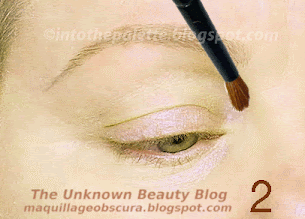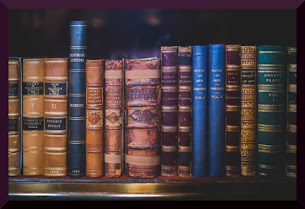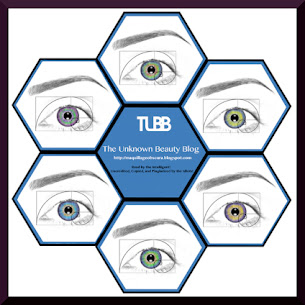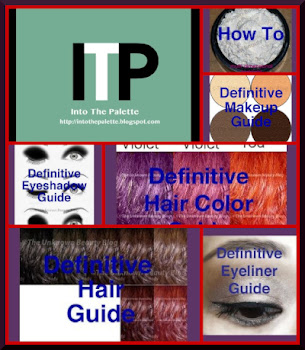This may be re-hashing what I wrote for hair color guide but bear with me. Different people absorb information in different forms. For those of you who didn't quite understand color theory via hair color, then maybe you will understand it with this post.
Color and the basics of how each one works with the other is very important before trying to just mix color and hope for the best. This is especially true when it comes to skin tones because flesh tones are very difficult to create because of the variations of them.
The Simple Primary Colors
There are only three primary colors—blue, red, and yellow.
Blue is the only cool toned primary and it is also the darkest. Since, it is the only cool toned primary color, this one becomes important when it comes to adding coolness and depth for any skin tone.
Red is a warm medium toned primary.
Yellow is also warm but the lightest of the primaries.
These three mixed together creates varying degrees of brown with the addition of white and black, creating a starting point for skin tones. These primaries are also used to neutralize secondary colors.
The Ever-So-Important Secondary Colors
These are a mix of two of the primary colors.
Violet = Blue + Red
Green = Blue + Yellow
Orange =Red + Yellow
Let’s analyze these secondary colors.
Violet is a mix of blue which is the darkest and the only cool toned primary and a bit of red which is a medium warm primary. I consider this to be the dark cool.
Green is a mix of blue and yellow, a dark cool toned primary and a light warm tone primary. This is a light cool color.
Orange is the mix of the two warm colors, red and yellow. In terms of secondary, this is the only real warm color.
Secondary colors are the colors which will neutralize a primary color or will point towards the destination of the color. Will a blue become more violet or will it go more towards green? This creates the tertiary Colors
The Mixed Up Tertiary Colors
These are the colors created by mixing a primary with a secondary.
Blue Violet = Blue + Violet (Blue + Red)
Red Violet = Red + Violet (Blue + Red)
Red Orange = Red + Orange (Red + Yellow)
Yellow Orange = Yellow + Orange (Red + Yellow)
Yellow Green = Yellow + Green (Yellow + Blue)
Blue Green = Blue + Green (Yellow + Blue)
Again, analyzing these tertiary you can see what lies beneath.
Blue Violet is made out of blue alone and a blue and red (violet). This color is a very cool dark tertiary because it contains a double dose of blue to the one dose of red.
Red Violet is made up of a medium warm primary of reds and the dark primary of blue. This one has a double dose of the red which makes it a warm and overpowers the blue.
Red Orange is a very warm medium color because of the combination of two warm colors and the double dose of red with the yellow.
Yellow Orange is a light warm color because it is made up of two yellows, the lightest primary, and a red.
Yellow Green contains more yellow than the blue, therefore, this one can be considered as a light warm tertiary color since yellow is so prominent.
Blue Green carries the double dose of blue with one part yellow. This one is more of a medium cool because dark and light average out to medium and the blue overpowers the yellow.
Generally, tertiary carry too many of the primary colors. These colors really aren't recommended for mixing together if you are trying to create a color in a certain color family. Usually, the end result of tertiary colors are just browns. This is the reason why when you start mashing up various eyeshadows you won’t get the color you envisioned because they are so mixed anyway. Tertiary colors neutralize and leave behind the “undertone” of the color.
How Colors Work
Now, how do you use these colors? As I mentioned, primary and secondary colors can be used to neutralize each other. This makes them complementary colors. This is usually found at the opposite ends of each color.
Blue is cancelled out by orange.
Red is cancelled out by green.
Yellow is cancelled out by violet.
What is the logic of this? Well, I told you if you mix the primary colors together, they make a brown.
Blue + Red + Yellow = Brown
Red + Blue + Yellow = Brown
Yellow + Blue + Red = Brown
See how all the primary colors are present?
If canceling out a certain undertone in your skin is important, it is important to find the complementary color.
Tertiary colors have their complementary colors in the form of another tertiary. Opposite ends of the color wheel show how each color will cancel each other out. Don't quite see it? To neutralize is to create a brown, and a brown is a mix of all the primary colors.
Blue Violet is cancelled out by Yellow Orange because the Blue will receive the primary colors of Red and Yellow from the Orange and Violet which is made up of the primary Blue and Red will receive the primary color of Yellow.
Check out the other tertiary and their complementary partners.
Brown Brown
Brown Brown
As I mentioned, a mix of tertiary colors will usually end up in brown and now you can see why because any mix will really complement some primary set of colors. In the examples above, you see the double dosage of browns.
Tertiary colors come in handy when you are trying to color correct hair color or create a foundation color with a certain undertone.
Understanding these colors will also help you choose colors best for your skin tone. Just because a color looks good and is hyped to the utmost ends of the earth, it doesn't necessarily mean it will go with your skin coloring.
Hope you found this post helpful, stay tuned for more!
Olivia


















